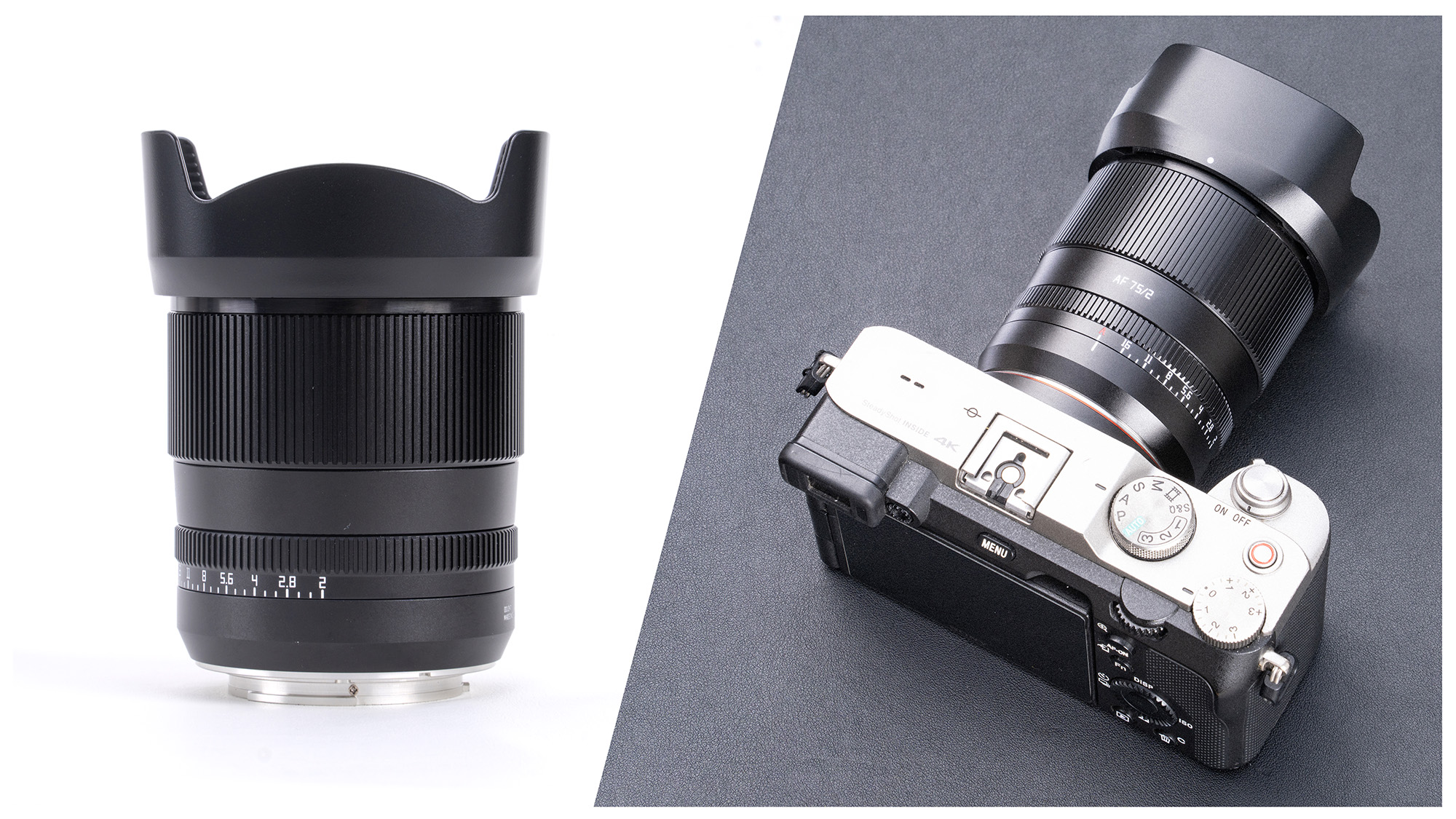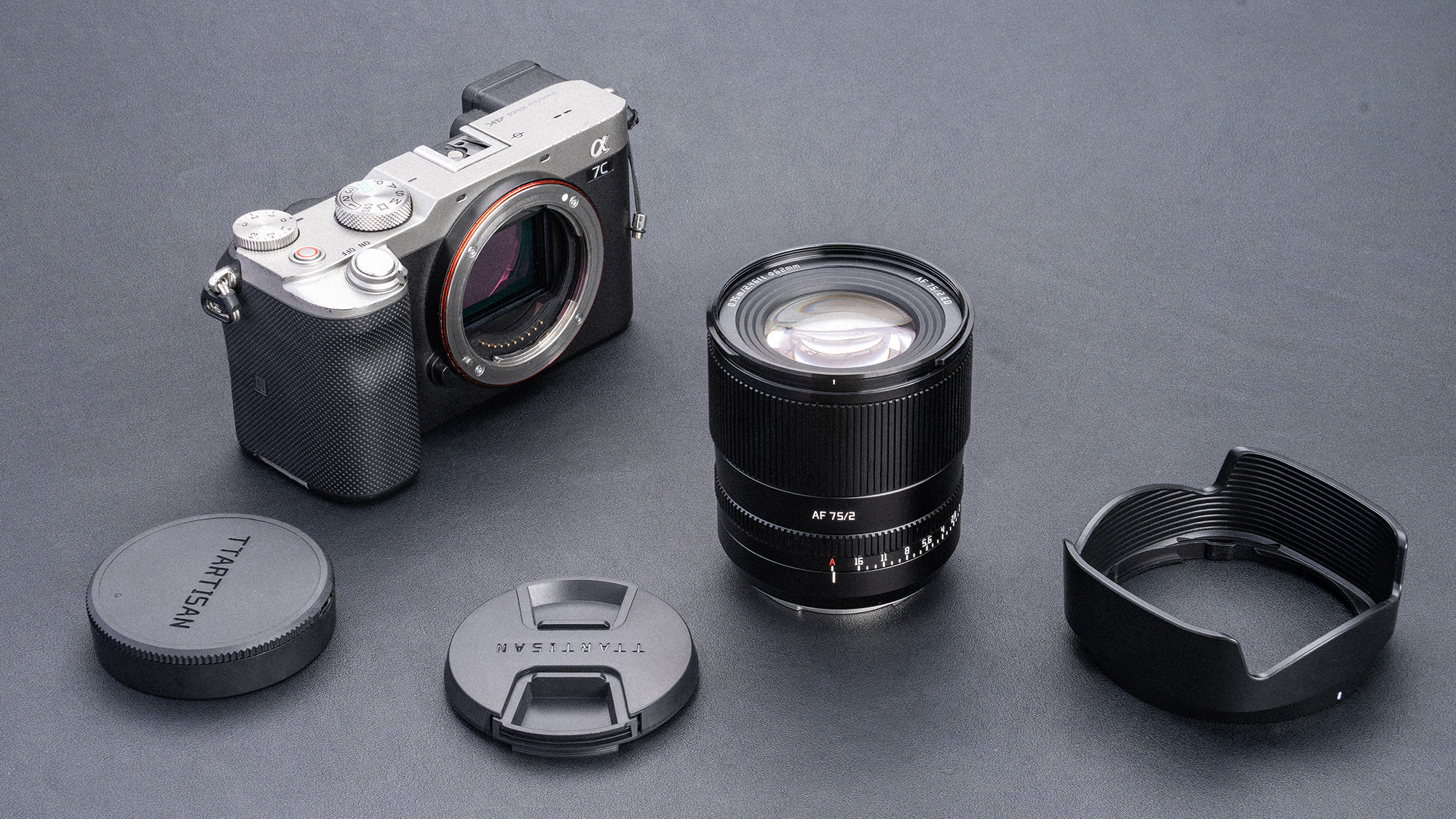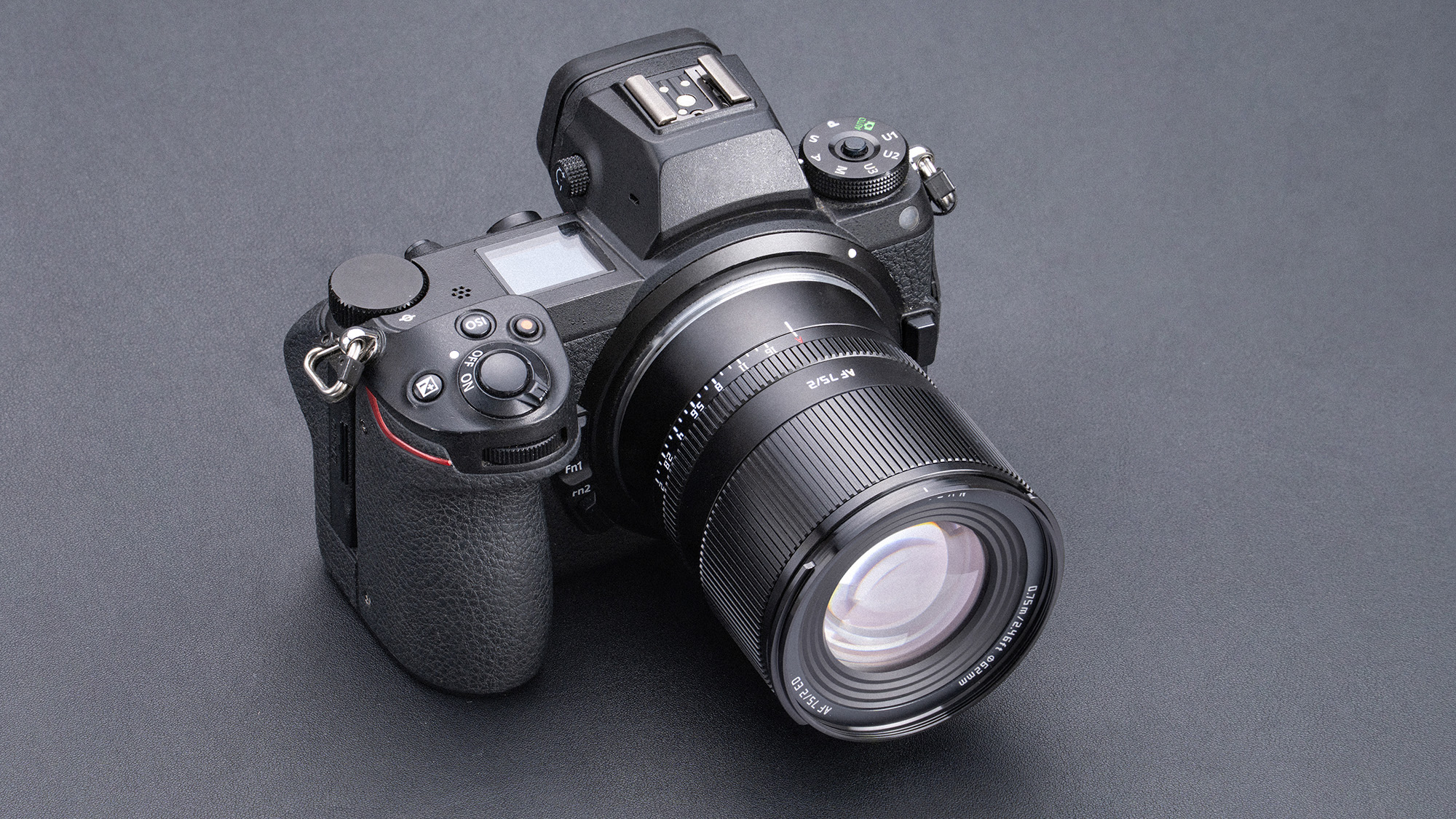
TTArtisan has released the AF 75mm f/2 prime for Sony E and Nikon Z-mount cameras. This full-frame prime boasts a stepping motor, delivering what TTArtisan is calling "fast" autofocus, and is priced just $199 / £199 (Australian pricing to be confirmed).
Not only is that an incredibly competitive price for a full-frame, autofocus-capable lens that will appeal if you use your camera for portraits, but the optical construction (ten elements within seven groups) is housed within a metal body – something you'd expect from a more premium offering.
Surprisingly, it still weighs just 328-340g (presumably without and with the included lens hood, respectively), compared to the Nikon Z 85mm f/1.8 S at 470g and the Sony FE 85mm f/1.8 at 371g. Dimensionally, the Sony variant is slightly shorter at 74mm (2.91in) than the Nikon variant at 76mm (2.99in), with both featuring a diameter of 67mm (2.64in).
A standout feature of the TTArtisan AF 75mm f/2 is the presence of an aperture ring. This will surely delight Nikon Zf and Z fc users, given the notable lack of Z-mount lenses with retro-chic aperture rings, though its clicked design may not be ideal for video shooters.


The 75mm focal length isn't far off 85mm – a focal length revered by portrait photographers. And the wide f/2 maximum aperture (to f/16) should provide a suitably shallow depth of field for popping sharp portrait subjects against a soft background, while I'd hope to see nice, circular bokeh, thanks to the nine-bladed diaphragm.
The size of this prime could make it a great companion for a portable setup, too. I could see it pairing well with a Sony A7C II or a Nikon Z f. If you wish to use it with an APS-C camera such as the A6700 or Z fc, you’ll end up with an equivalent 112.5mm focal length.
Other specs of note include a 62mm filter thread and 0.75m close-focussing distance. The AF 75mm f/2 also features a "[USB] Type Cinterface for firmware upgrades," suggesting there will be support for the optic in the future.
The only thing to be aware of is that autofocus isn't supported for the Sony A3000 and A3500 – though with both cameras being about a decade old, released in 2013 and 2015 respectively, this probably won't affect too many users.

You may also be interested in our guides to the best Nikon cameras and the best Sony cameras.







